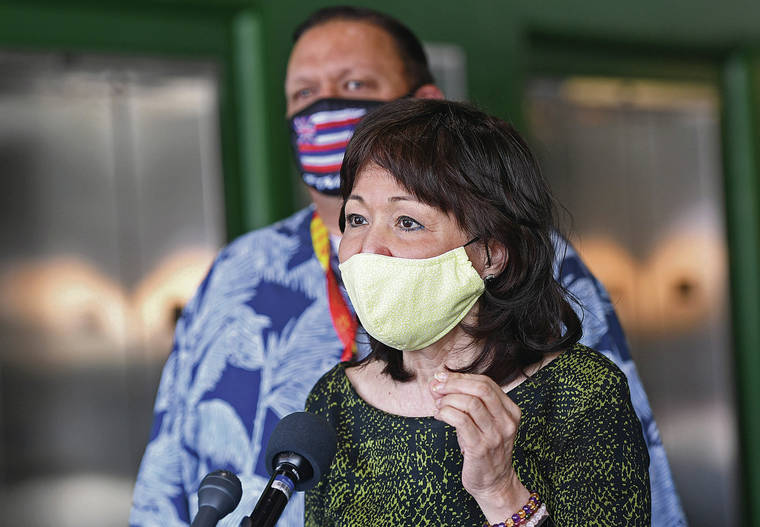New requirements ahead for airline passengers arriving in Hawaii

BRUCE ASATO / BASATO@STARADVERTISER.COM
A new “travel declaration form” was nicknamed the “Donna Kim form” because of the senator’s persistence on changes to the document. State Sens. Kim and Kurt Favella along with other members of the Senate Special Committee on COVID-19 visited Daniel K. Inouye International Airport on May 1 to observe the screening of inbound passengers.
Arriving airline passengers in the age of the new Opens in a new tabcoronaviru Opens in a new tabs will face a “Donna Kim” form along with a new TSA-type inspection system that originally cost $35 million just at Daniel K. Inouye International Airport — a price tag that lawmakers rejected as too high.
Hawaii has “already one of the stricter or more enforced quarantine orders in the country,” Sean Williams, vice president of the airline trade organization group — Airlines for America — told members of the Senate Special Committee on COVID-19 committee Thursday. “Hawaii probably has the most enforced and the strictest.”
Two major changes are in the plans for arriving passengers: a new level of scrutiny and a new form designed to give officials information to follow up on — and potentially prosecute — failed promises to adhere to statewide quarantine rules, Ford Fuchigami, administrative services officer at the state Department of Transportation, told the committee.
A new “travel declaration form” was immediately nicknamed the “Donna Kim form” by some members of the special committee because of her persistence on changes. It is being drafted to include new language for all incoming passengers, including interisland essential workers and airline crew members, Fuchigami said.
“This will replace the AG (state Department of Agriculture) declaration form,” he said.
The new form is intended to include every passenger’s information such as the address of their lodgings and confirmation information to allow tourism workers to follow up. The current agriculture form requires information only for the entire group in a traveling party, not by individual.
Don't miss out on what's happening!
Stay in touch with breaking news, as it happens, conveniently in your email inbox. It's FREE!
The new form eliminates the new and awkward category of “intended” resident that had confused many in the early days of Hawaii’s efforts to track arrivals.
The new categories for arriving airline passengers are expected to be those who are on vacation, a returning resident, visiting family or friends, or on business, Fuchigami said.
Just as important, he said, the new form will require a departure date that shows “when are they actually leaving,” he said.
Asked about specific complaints about violations by airline crew and their families, Fuchigami said, “The law applies to everybody.”
Fuchigami also said some arriving passengers in quarantine thought welcoming visitors at their quarantine sites was allowed.
“Nobody can come to their room,” he said. “It’s very, very clear.”
The $35 million cost of the DOT’s original plan to create a new level of scrutiny for arriving passengers just at Inouye International was deemed too much by unspecified members of the Legislature, Fuchigami said.
The DOT is working on modified plans — including ongoing staffing — that more likely would cost $23 million just for Honolulu, he said.
The new checkpoint will mean “there’s going to be delays” for arriving passengers, Fuchigami said.
The goal is to process passengers within 10 minutes, which is “very good” by Transportation Security Administration standards, and up to 20 to 30 minutes, which is considered “acceptable,” Fuchigami said.
If the new inspections take longer than 30 minutes, Fuchigami said, “We need to go back to the drawing board.”



